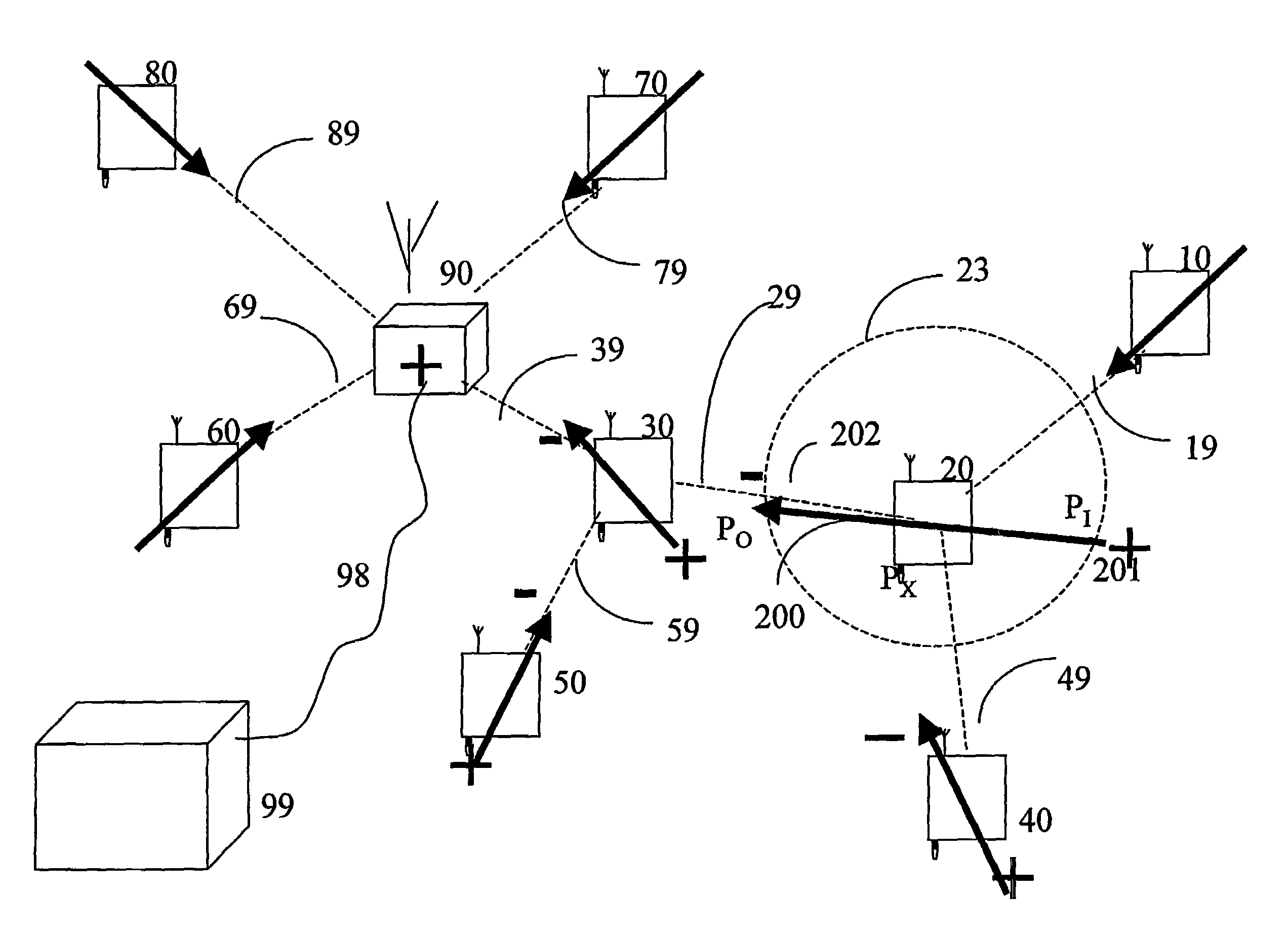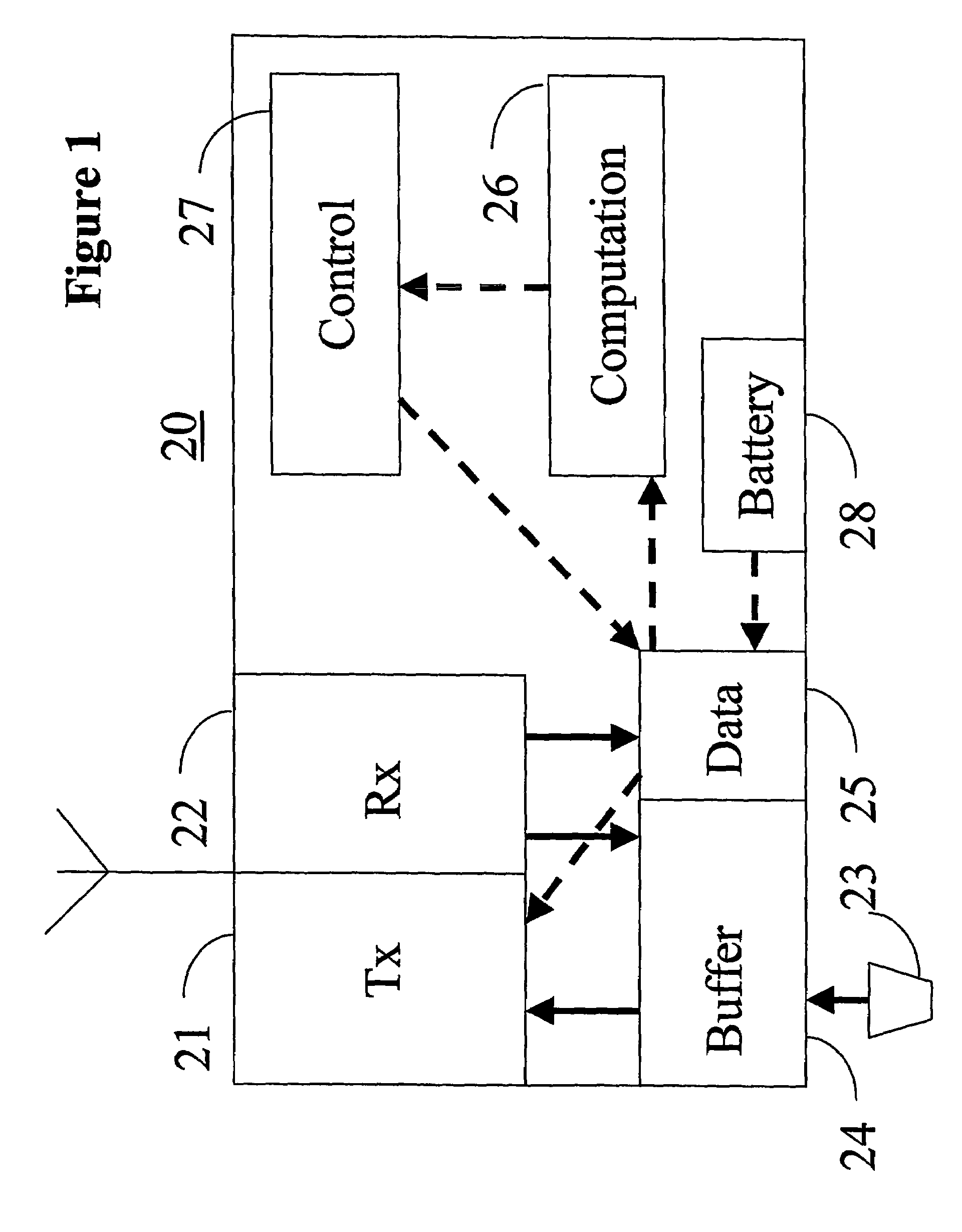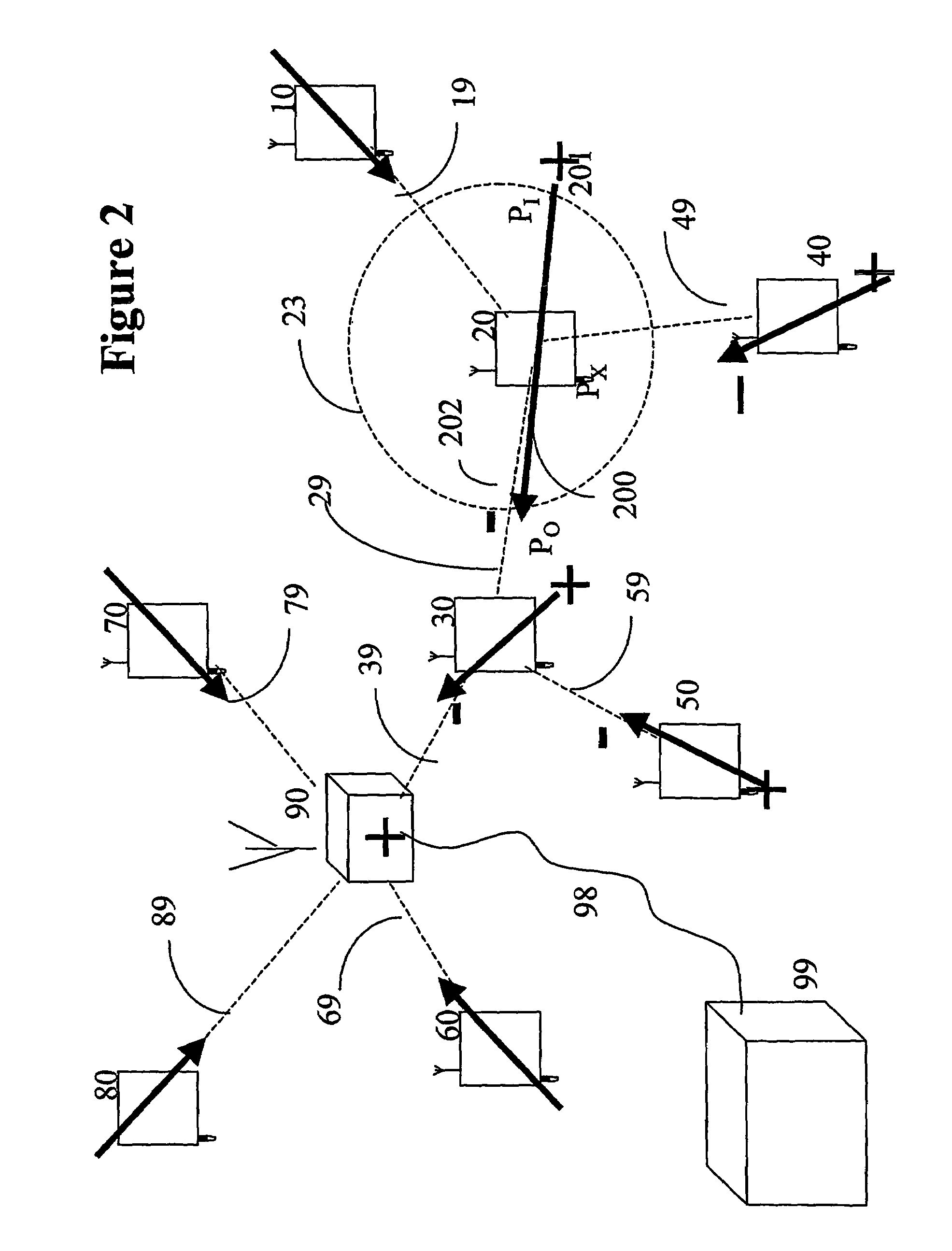Ad hoc communications system
a communication system and ad hoc technology, applied in the field of ad hoc networking applications, can solve problems such as the change of nearest neighbours between data transmissions
- Summary
- Abstract
- Description
- Claims
- Application Information
AI Technical Summary
Benefits of technology
Problems solved by technology
Method used
Image
Examples
Embodiment Construction
[0069]FIG. 1 shows a device 20 according to the invention. It comprises a wireless transmitter 21 and a wireless receiver 22, and data collection means 23 which include position sensors, and environmental or physiological sensors for determining properties of the environment of the device, or of some object to which it is attached. There is also a data buffer 24 for storing payload data (that is to say, data that is to be transmitted to a destination for processing) and a data store 25 for operational data (that is to say, data required for the operation of the device and in particular for controlling the transmission of the payload data). There is also computation means 26 for processing the data collected by the data collection means 23 and stored in the data buffer 24, and control means 27 for controlling the operation of the device in response to outputs from the computation means 26. The device is powered by a battery 28 whose condition is monitored and the results stored in th...
PUM
 Login to View More
Login to View More Abstract
Description
Claims
Application Information
 Login to View More
Login to View More - R&D
- Intellectual Property
- Life Sciences
- Materials
- Tech Scout
- Unparalleled Data Quality
- Higher Quality Content
- 60% Fewer Hallucinations
Browse by: Latest US Patents, China's latest patents, Technical Efficacy Thesaurus, Application Domain, Technology Topic, Popular Technical Reports.
© 2025 PatSnap. All rights reserved.Legal|Privacy policy|Modern Slavery Act Transparency Statement|Sitemap|About US| Contact US: help@patsnap.com



